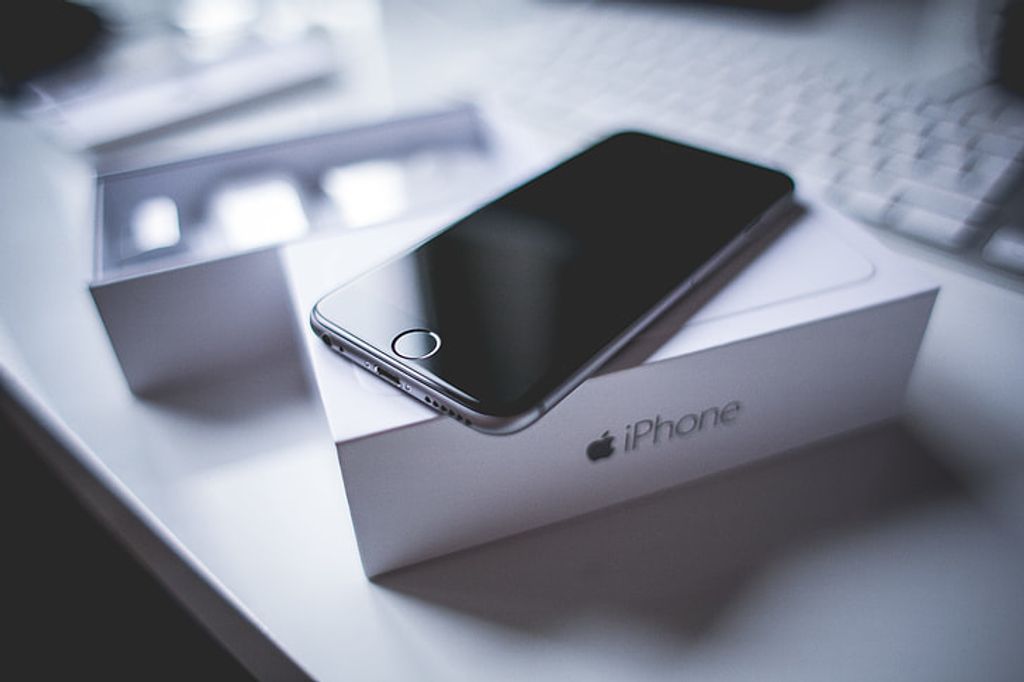Getting a new laptop is an exciting moment, but it can also be overwhelming. There are several steps you should take immediately after unboxing your new device to ensure its security, optimize its performance, and personalize it to your liking. This guide will walk you through the crucial steps to take after buying a new laptop, whether you’re a tech enthusiast or a casual user.
Key Takeaways
- Set up your new laptop by unboxing, charging, and going through the initial setup process.
- Secure your laptop by setting up a strong password, enabling firewall and antivirus, and setting up user accounts.
- Optimize your laptop’s performance by updating your operating system, removing unnecessary preinstalled software, and installing essential software.
- Personalize your laptop by adjusting display and sound settings, setting up email and social media accounts, and organizing your files and folders.
- Maintain your laptop’s health by regularly updating software, cleaning and caring for your laptop, and backing up your data.
Setting Up Your New Laptop

Charging Your Laptop
After unboxing your new laptop, the next crucial step is to charge it. Most laptops come with a charger in the box, often a USB-C connector for modern models. Connect the charger to your laptop and plug it into a power source. It’s recommended to fully charge your laptop before turning it on for the first time. This initial charge can help calibrate the battery for future charging cycles.
Here are the steps to follow:
- Connect the charger to your laptop.
- Plug the charger into a power outlet.
- Wait for the laptop to fully charge before turning it on.
Tip: While it’s not necessary to always fully charge your laptop, doing so for the first time can help ensure optimal battery performance.
Remember, the charging time can vary depending on the laptop model and its battery capacity. Always refer to your laptop’s manual for specific charging instructions and safety guidelines.
Securing Your New Laptop

Setting Up a Strong Password
One of the most critical steps in securing your new laptop is to set up a password manager. Password managers help you generate strong, unique passwords for each of your accounts, store them securely, and automatically fill them in when you need to log in. This not only protects your accounts from hacking attempts but also simplifies your online life.
After installing your chosen password manager, follow these steps to set it up:
- Open the password manager and create a new account.
- Set a strong master password. This should be a password that you’ve never used before and is complex with a mix of letters, numbers, and symbols.
- Start adding your online accounts to the password manager. Each time you add an account, the password manager will offer to generate a strong password for you.
- Enable auto-fill on your browser. This allows the password manager to automatically fill in your passwords when you need to log in to your accounts.
Tip: By using a password manager, you’ll enhance the security of your online accounts and ensure that you’re not using weak or duplicate passwords, which can be a significant vulnerability.
With this additional step, your new laptop will be even more secure.
Optimizing Your Laptop’s Performance

Removing Unnecessary Preinstalled Software
Often, new laptops come with bloatware, software that is pre-installed by the manufacturer or retailer, often without the user’s consent or knowledge. This could be an unneeded game or antivirus software trial that you don’t really need, taking up valuable space on your computer. Luckily, it’s pretty easy to get rid of this software.
For Windows 10 users, the steps to uninstall these apps are as follows:
- Select Start, then select Settings
- Click on Apps and then select Apps & features
- Choose the bloatware you want to Uninstall
For Windows 11 users, the process is slightly different:
- Click Start and select Settings
- Select Apps
- Click on Installed Apps and uninstall any bloatware
Remember: Before you clean out your computer with these steps, it’s always a good idea to back up your data.
In addition to manual removal, you might want to consider a quality performance optimization program to do a deep clean and remove all redundant junk from your device. This can help your laptop perform the way it’s supposed to and better serve your needs.
Installing Essential Software
After updating your operating system and removing unnecessary preinstalled software, the next step is to install the essential software. This typically includes a web browser, productivity tools, security software, and any other applications you frequently use. By default, Windows 11 comes with Microsoft Edge, a highly efficient browser. However, you may prefer to install a different browser such as Google Chrome, depending on your personal preference.
Here are some essential software categories and examples:
- Web Browsers: Google Chrome, Mozilla Firefox, Microsoft Edge
- Office Suites: Microsoft Office, Google Workspace, LibreOffice
- Security Software: Windows Defender, Bitdefender, Norton
- Multimedia Tools: VLC Media Player, Adobe Photoshop, Audacity
Tip: When installing new software, always download it from the official website or a trusted source to avoid malware.
Remember, the goal is not to clutter your new laptop with numerous applications, but to equip it with the necessary tools for your needs. Also, consider cloud-based options for some applications, as they can save space on your PC and provide easy access to your files from any device.
Personalizing Your Laptop

Adjusting Display and Sound Settings
After setting up your new laptop, personalizing it to match your style is the next exciting step. One of the first things you can do is adjust the display and sound settings. To start, open the Settings app and navigate to the Personalization page. Here, you’ll find a plethora of options to customize your laptop’s appearance and sounds.
You can choose from preset themes that change your background image and theme colors. Alternatively, you can dive into individual options for a more personalized touch. The Background options allow you to change your desktop’s background, including setting slideshows. The Colors page lets you choose between light and dark themes, and select an accent color of your preference.
The Themes page offers packages that change both display and sound settings, including elements like the mouse cursor. Feel free to explore these options at your leisure. For a more detailed guide, you can refer to our comprehensive deep dive into the Windows 11 Settings app.
Tip: One particular option to consider is the taskbar personalization settings. You can move the icons, which are centered by default, back to the left corner of the screen.
Remember, personalizing your laptop is all about making it cater to your style. Take your time to explore and adjust the settings until you’re satisfied with how your new laptop looks and sounds.
Maintaining Your Laptop’s Health

Regularly Updating Software
Keeping your computer up to date is not just a mundane task, it’s a crucial step in maintaining the health of your laptop. This is particularly important for security reasons, as updates often include patches for vulnerabilities that could be exploited by malware. Additionally, updates can also introduce new features that enhance your user experience.
To ensure your laptop is running the latest version of its operating system, follow these steps:
- Open the Settings app
- Navigate to the Windows Update page
- Click Check for updates
Remember to check back once the updates have installed, as new updates may show up. Some updates are optional, but it’s recommended to install the mandatory ones that show up.
Tip: If your PC is still on Windows 10 and you want to upgrade to Windows 11, consider reading up on the upgrade process to ensure a smooth transition.
In addition to the operating system, don’t forget to update the apps that come pre-installed with Windows. These update separately using the Microsoft Store. To do this:
- Open the Microsoft Store
- Click the Library page in the bottom left corner
- Click Get updates
This process may take a while as almost all the preinstalled apps are likely to have updates. Regularly updating your software ensures your laptop stays secure, efficient, and equipped with the latest features.
Cleaning and Caring for Your Laptop
Maintaining the physical health of your laptop is as important as its digital health. Regular cleaning can prevent dust and dirt from causing overheating and other issues. Here are some tips for cleaning and caring for your laptop:
-
Clean the keyboard with a can of compressed air to remove dust and crumbs. Hold the can at an angle and use short bursts of air.
-
Wipe the screen with a microfiber cloth. Avoid using cleaning solutions unless they are specifically designed for laptop screens.
-
Clean the ports and vents using a cotton swab or compressed air. Be gentle to avoid causing damage.
Remember to turn off and unplug your laptop before cleaning, and avoid getting moisture in any openings.
Regular cleaning can extend the lifespan of your laptop and keep it running smoothly. It’s also important to keep your laptop in a cool, dry place to prevent overheating and damage from humidity.
Backing Up Your Data
Backing up your data is a crucial step in maintaining your laptop’s health. It provides a safety net in case of unexpected data loss or system failure. There are several methods to back up your data, but the most common ones involve using an external hard drive or a cloud storage service.
Here are the steps to back up your data using an external hard drive on Windows:
- Connect the external drive to your computer.
- Open File Explorer. You should see the external drive in the left-side panel.
- Copy the content you want to back up.
- Paste the copied files or folders into the external drive.
For cloud storage services like Dropbox, OneDrive, or Google Drive, the process is slightly different:
- Backup your files onto the cloud storage service.
- Log into your service on your new PC.
- Download/restore those files onto your new computer.
Tip: Regularly backing up your data can save you from significant stress and loss of important files. It’s a good practice to set a reminder for yourself to back up your data every few weeks or months, depending on how often you use your laptop.
Conclusion
In conclusion, setting up a new laptop involves a series of steps that are crucial to ensure optimal performance and security. From checking for updates, installing your preferred web browser and apps, to disabling unnecessary features, each step contributes to a personalized and efficient computing experience. Remember, it’s not mandatory to follow all the steps, but some are highly recommended. The key is to understand your usage and configure your new laptop accordingly. So, whether you’re a tech enthusiast excited about the latest games or a professional aiming for productivity, these steps will help you make the most of your new laptop.
Frequently Asked Questions
What are the first steps after unboxing my new laptop?
The first steps include checking the contents of the box, charging your laptop, and going through the initial setup process which includes setting up a strong password, enabling firewall and antivirus, and setting up user accounts.
Why is it important to update my operating system immediately?
Updating your operating system is crucial for security reasons as it patches any known vulnerabilities. It can also add new features and improve the performance of your laptop.
What can I do to optimize my laptop’s performance?
To optimize your laptop’s performance, you can update your operating system, remove unnecessary preinstalled software, and install essential software that you frequently use.
How can I personalize my new laptop?
You can personalize your laptop by adjusting display and sound settings, setting up your email and social media accounts, and organizing your files and folders according to your preference.
What measures should I take to maintain my laptop’s health?
To maintain your laptop’s health, you should regularly update your software, clean your laptop physically and digitally, and back up your data regularly to prevent data loss.
What should I do with my old laptop after getting a new one?
Before disposing or selling your old laptop, ensure to wipe it clean to prevent your personal data from being exposed. You can do this by resetting the laptop to its factory settings.




